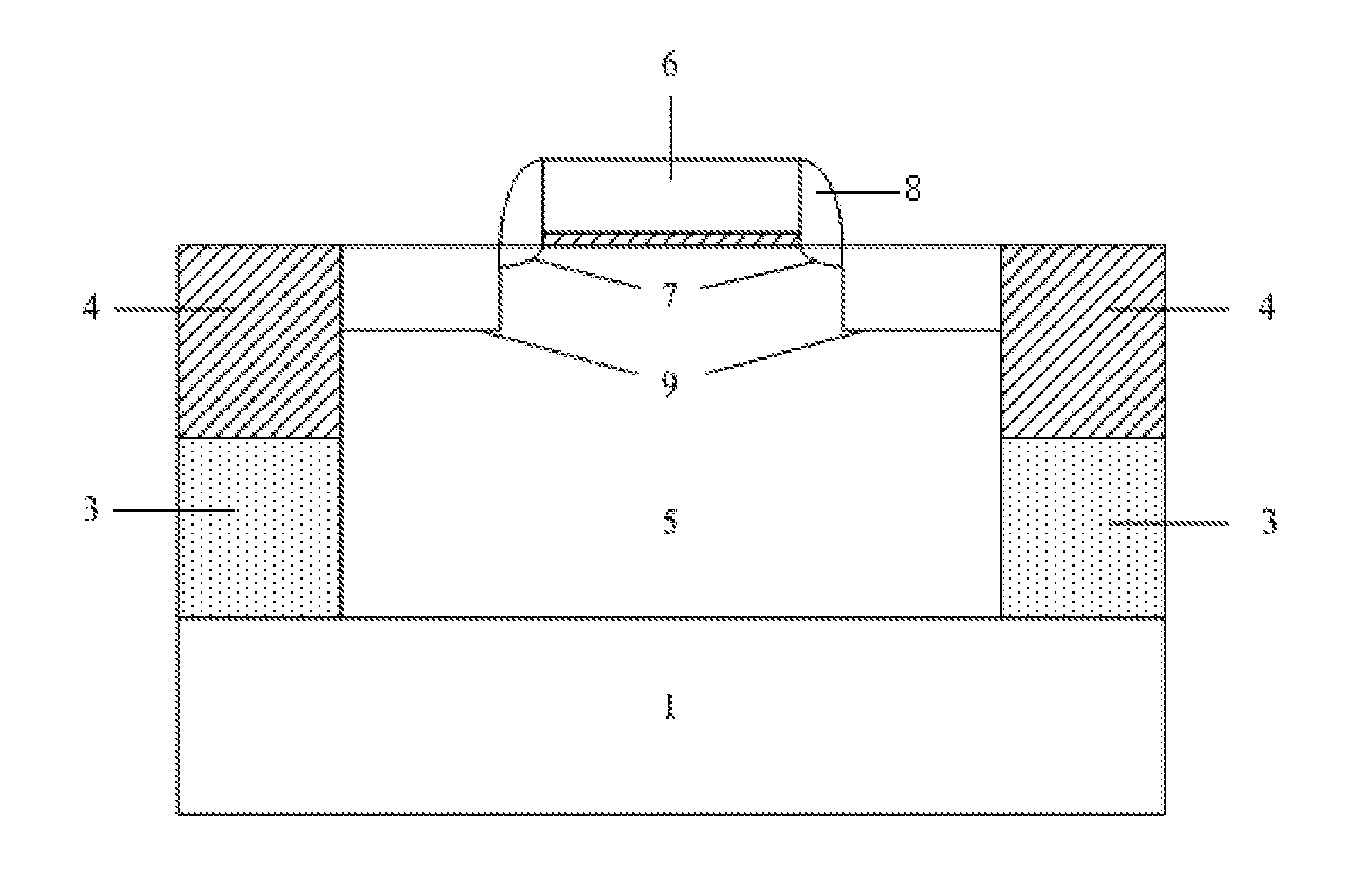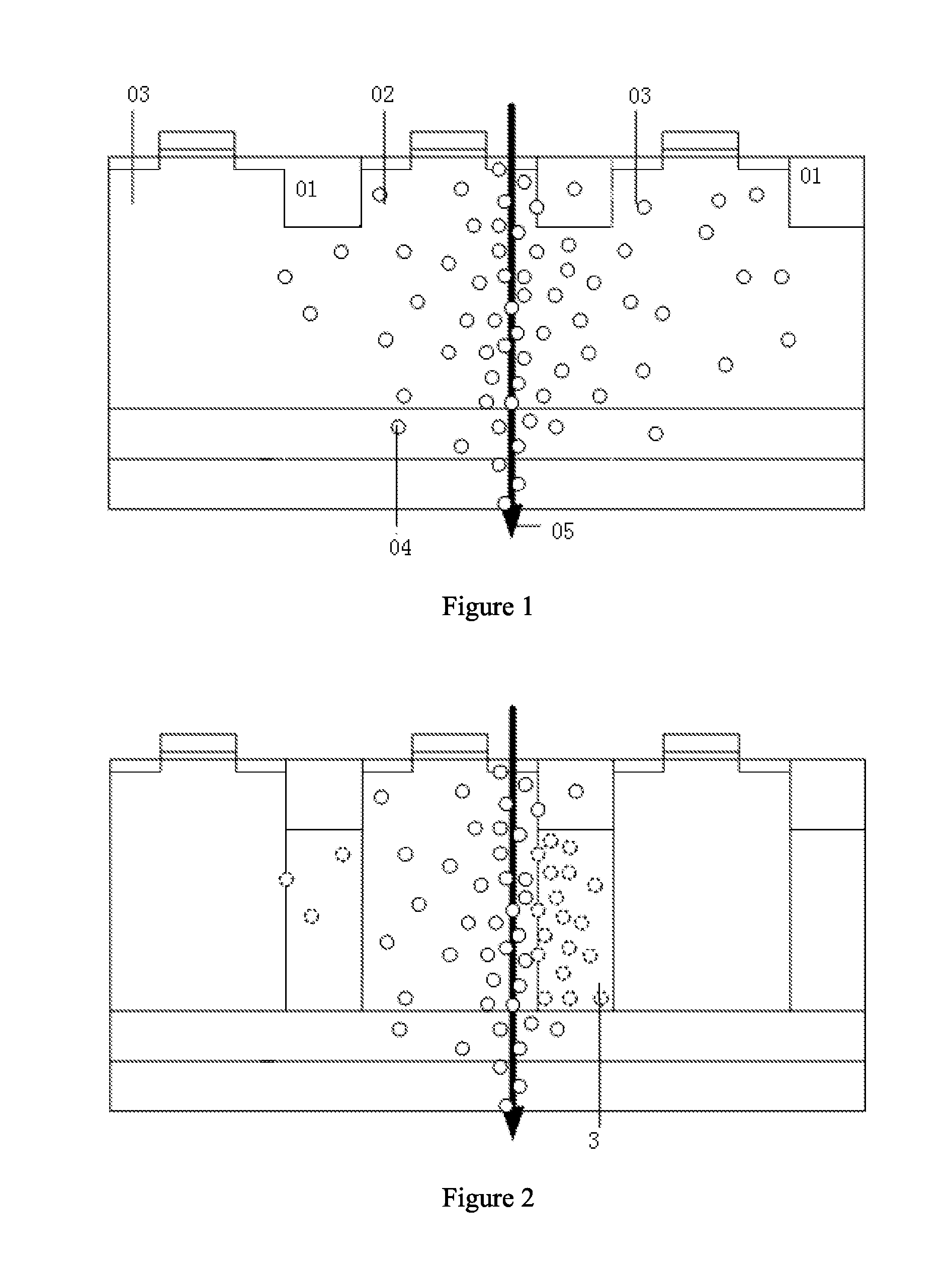CMOS Device for Reducing Charge Sharing Effect and Fabrication Method Thereof
- Summary
- Abstract
- Description
- Claims
- Application Information
AI Technical Summary
Benefits of technology
Problems solved by technology
Method used
Image
Examples
Embodiment Construction
[0026]The embodiments of the present invention will now be illustrated in detail in conjunction with attached drawings.
[0027]As shown in FIG. 2, a NMOS device is described as an example. Due to the ionization process produced by heavy ions, a large number of electron hole pairs will be formed along the track of the heavy ions. The holes move to the substrate, one portion of electrons are collected by sensitive nodes of the device to which the heavy ions are incident, and the other portion of electrons diffuse from a lower portion of an isolation region (e.g. STI region) to sensitive nodes of nearby devices and are collected. Therefore, an additional isolation region 3 of porous silicon material is disposed under the isolation region of the device, so that electrons or holes are trapped when diffusing toward nearby devices, the number of the electrons and the holes reaching the sensitive nodes of nearby devices is reduced, and thus the charge sharing effect can be effectively inhibit...
PUM
 Login to View More
Login to View More Abstract
Description
Claims
Application Information
 Login to View More
Login to View More - R&D
- Intellectual Property
- Life Sciences
- Materials
- Tech Scout
- Unparalleled Data Quality
- Higher Quality Content
- 60% Fewer Hallucinations
Browse by: Latest US Patents, China's latest patents, Technical Efficacy Thesaurus, Application Domain, Technology Topic, Popular Technical Reports.
© 2025 PatSnap. All rights reserved.Legal|Privacy policy|Modern Slavery Act Transparency Statement|Sitemap|About US| Contact US: help@patsnap.com



